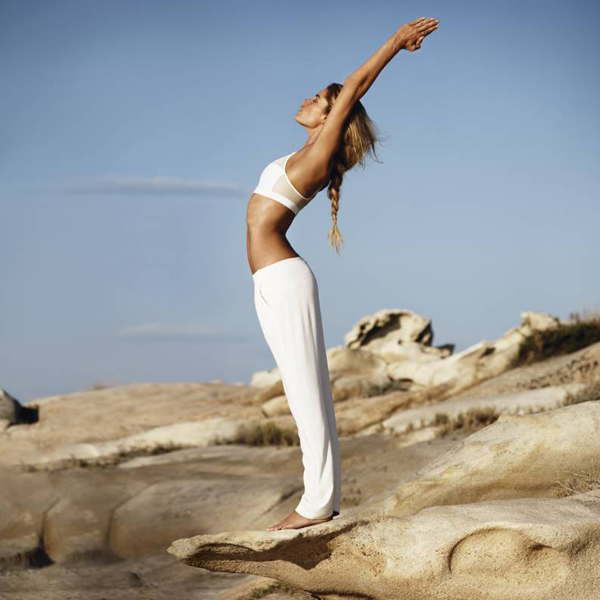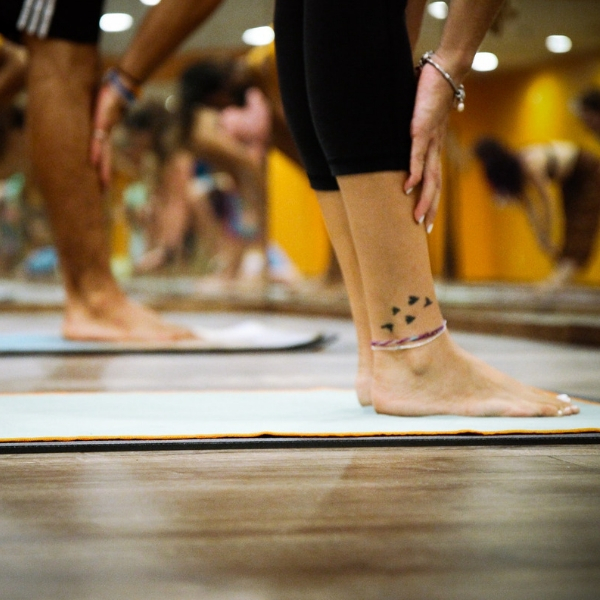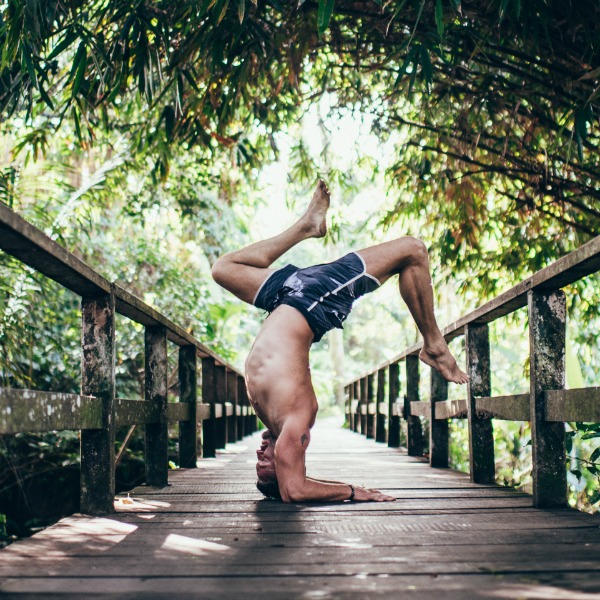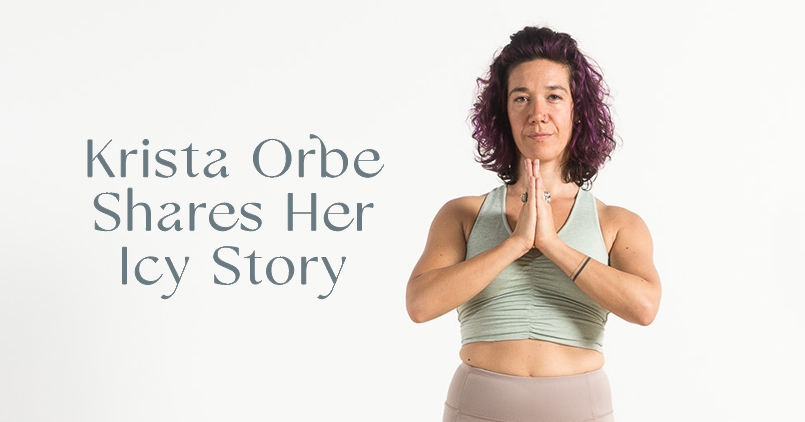03 Jul 8 Yogis On How To Practice Self-Care

In today’s culture of always being available and “on”, the ancient practice of yoga can offer a holistic approach to combating the all-too-common ills of stress, anxiety and exhaustion.
Modern yoga has grown to include more dynamic workouts, with varying styles of practice – from more traditional Hatha yoga to modern interpretations like Rocket – but taken back to its roots, yoga is a meditative and holistic practice, more focused on self-awareness than calorie-burning.
The philosophical teachings underpinning the physical practice are known as the Yoga Sutras, the Ten Commandments of yogi living, if you will. They encourage us to adopt concepts like non-harming (ahimsa) and tapas (discipline) not just in the postures we adopt on the mat, but also into our actions, words and thoughts off the mat, approaching ourselves and the world around us with care and kindness.
To celebrate International Yoga Day, we asked eight of our favourite yoga teachers around the world – from celebrity favourites Nadia Narain and Mandy Ingber (who teach Kate Moss and Jennifer Aniston respectively) to Tara Stiles, founder of Strala Yoga, and renowned teacher and author Judith Hanson Lasater – to give us their personal recommendations and postures for self-care.
Rachel Brathen, Yoga Girl, Aruba
Self-care for me is more about balance than striving for perfection. I take care of my body through movement and eating well, but it’s equally important that I have space to enjoy dessert and wine without guilt. I am a working mother and self-care for me these days involves both quality time with my daughter, without distractions, and time for myself at the end of the day. I take a lot of baths and, of course, practice yoga.
For restoration I always come back to Viparita Karani, legs-up-the-wall pose. It calms the nervous system, helps ground you and is also great for lower back and neck pain. It doesn’t require any “doing”; it’s a passive pose you can completely relax into without thinking. Many things we do on the mat require coordination and focus; this pose does not. Just stay aware of the breath and let yourself be.
Judith Hanson Lasater, PhD, PT, San Francisco, California
We are often told that self-care means that you should treat yourself in some way – get a massage, soak in a tub – but there’s a much deeper meaning to the word. For me self-care means paying attention to the thoughts about myself that I feed and ruminate on. Through this process of awareness we can release (without judgement) the thoughts that are preventing us from loving and accepting ourselves. The phrase I use often when I reflect on my actions and words is: “How human of me.” How human of me to judge myself so harshly, or to push myself to achieve. That mantra helps me take a step back and approach myself from a place of deep empathy.
It’s ironic that when we need self-care the most, we believe we don’t have the time for it. That’s exactly when we need to go set ourselves up in savasana, corpse pose. Propping the head and knees, supporting the ankles and wrists, and covering the eyes. Remain in stillness, soften and let go of all that we think we are and all that we think we need to do. Research shows that relaxation and the reduction of stress in this way actually causes us to become more productive. You take savasana not only as a way of showing love and acceptance for yourself, but also showing love for the people around you.
Mandy Ingber, Los Angeles, USA
For me self-care means being responsible for myself – practising patience and taking care of myself emotionally as well as physically and mentally. Knowing how I feel is really the seed of all that. How can I take care of myself if I don’t know how I feel? I’ve recently realised how much I feel in my body physically – even my emotions create physical reactions – and often when I am unhappy, it is due to a physical discomfort that comes from emotional distress. What is the resolution? Attention.
It’s unrelated to exercise or yoga, is universal and anybody can do it. In the morning (or any time) I sit quietly and scan my body inch by inch from head to toe. As I sit and meditate on my body, I notice the sensations that are present and give every inch of my body some attention. I do this for five to 20 minutes, and then I check in with myself emotionally. I write a list – three things I am grateful for, three things I did well that day and three things I can let go of or have no control over.
Nadia Narain, co-author Self Care for the Real World, London, UK
Self-care is an attitude of kindness towards oneself. It can be anything from taking some time for yourself, having a massage, cooking yourself a nice meal (even if it’s just for you) to just being aware of the thoughts you think about yourself. Treat yourself with the same kindness and care that you would a dear friend. Notice what you say to yourself when you look in the mirror, or if you said something silly at work and are giving yourself a hard time, ask yourself – what would you say to your best friend?
My favourite self-care posture requires a rolled up towel or blanket, placed under the shoulder blades as you lay on your back, arms and legs stretched straight out. I like this one if I have been sitting a lot in the day over the computer or travelling. In just five or six breaths you can feel the difference it makes, and how open the chest feels.
Tara Stiles, New York, USA
Self-care for me has to do with how I am doing everything I do. I don’t think of self-care as scheduled time outside of my life. My process is slowing down, softening, breathing deep, feeling, believing what I feel and responding. That works for how I move in yoga, parenting, in relationships, at work, and everything else. Of course, daily meditation and easy-going yoga each morning help me stay connected to that process.
A breath-body connection meditation is great for self-care, allowing the body to lift on an inhale and soften and release on the exhale. I linger quite a bit in any place that feels nice or needs a bit of extra attention. It gives me a moment to check in with what is actually happening with my entire self. The breath-body connected movement works out any physical kinks while simultaneously getting in all the meditative aspects I need to access my best self. I go for anywhere from a few breaths to 10 or 20 minutes.
Duncan Peak, Byron Bay, Australia
One thing I’ve come to learn is that burnout doesn’t come from overworking, it comes from not resting when you have the time – you end up addicted to the dopamine rush. I like to meditate for 10 to 20 minutes a day, incorporate some form of movement (a workout or surf) and a stretch. A book and a cup of tea is now a daily ritual. Most of the time, I don’t want to stop, I’d rather charge and keep going, but I know I need to. Finally, I take some time to be present with nature and experience love as a feeling, not needing to direct it towards anything. Appreciate life as it is, not how my mind makes it.
I practice yin yoga when I wake up. Each morning I take four to six poses to forward bend, backbend, laterally bend, twist, externally rotate my legs and do lots of combination postures. The energetic release I feel is intense and each pose leaves me feeling like I have regained full range of flexibility with abundant energy flow. It’s not vigorous, but it’s perfect to get you ready for vigorous exercise. It’s a great way to get in touch with yourself and sets you up for an amazing day.
Sandeep Agarwalla, Head of Yoga at Ananda, Himalayas, India
Self-care for me is about taking care of myself on all levels. The body needs to be nourished and exercised so that it does not get too affected by diseases and age-related problems. The mind has to be channeled in the right direction so that we are not affected by the different triggers and negativities of daily life. The spirit, which is the source of our being, also has to be nurtured. If we ignore any of these aspects, we experience imbalance and disharmony.
My favourite posture for self-care is surya namaskar (sun salutations). It helps to move every part of the body and activates all the energy chakras. It’s a complete workout, too.
Paul Teodo, The Yoga Barn, Bali, Indonesia
Self-care is about maintaining a balance between my physical, emotional, mental and spiritual wellbeing. It’s about having a consistent yoga and meditation practice, but also having spare time set aside to spend alone and with loved ones. Living halfway across the world from my family and friends, it’s easy to lose touch with people. So right now my self-care also involves regularly reaching out to friends and family to check in with them and see how they’re doing. Picking up the phone to hear the voice of a good friend or my mum and dad is a great way to start or end the day off on a good note.
My favourite posture for self-care is trikonasana, triangle pose, a standing pose with legs apart, right foot turned slightly inward and arms raised parallel, going forward and down, resting the back of the hand on the inside of the thigh or shin, reaching the right arm straight up. I love the way it lengthens out my entire body, and holding it for several deep breaths always makes me feel great. It’s a pose that isn’t too physically intense, so I can incorporate it into any daily yoga practice.



